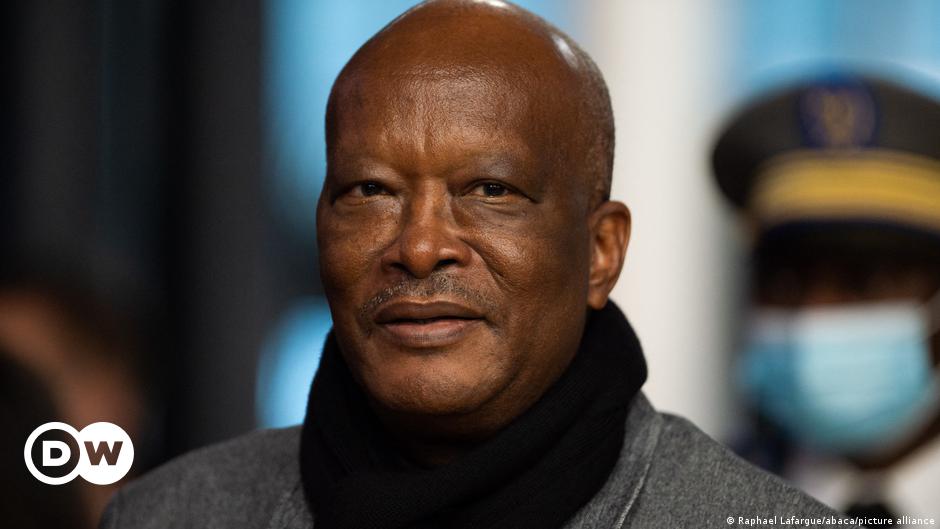
The situation in Burkina Faso remains unclear amid reports that the military has seized power and President Roch Marc Christian Kabore has been detained in the capital, Ouagadougou.
For months, the president has been under pressure from protesters who demanded he step down over the inability of his government to curb rapidly escalating insecurity and violence in the West African country.
Burkina Faso’s crisis erupted with little to no warning in 2016.
Initially, the nation was spared the conflict and violence that had flared in other Sahel countries such as Mauritania, Niger and Chad following the disintegration of the Libyan state in 2011 and Mali’s 2012 civil war.
But this changed in 2016 when gunmen attacked a hotel and restaurant in Burkina Faso’s capital, Ouagadougou, killing at least 30 people.
It was the West African country’s first large-scale terrorist attack, coming some two weeks after Kabore was inaugurated as president in 2015.
Many more attacks would follow.
Initially, strikes by groups such as Al-Qaeda in the Islamic Maghreb (AQIM) and Jama’a Nusrat ul-Islam wa al-Muslimin (JNIM) primarily targeted the military in Burkina Faso’s far north in the three-border zone to Mali and Niger.
But since 2019, the number of attacks has risen sharply, with violence also spreading to “previously unaffected areas” in its northern and eastern provinces, according to the UNHCR, the United Nations Refugee Agency.
Islamist armed groups are now also increasingly targeting civilians.
At least 132 civilians were massacred in the northeastern village of Solhan in June 2021, in what was Burkina Faso’s deadliest attack since the beginning of the violence.
Weak state
The roots of this violence run deep.
“The violence is a symptom of deeper, unresolved issues, namely ineffective governance, impunity for government officials who abuse civilians, a lack of job opportunities, and extreme climate shifts,” wrote Nosmot Gbadamosi in a December 2021 article for Foreign Policy.
“Youth anger on those issues provides a powerful stimulus for jihadi groups that seek to recruit among the local population,” she added.
Burkina Faso has seen months of anti-government protests
Other observers have long expressed similar convictions.
In a 2017 analysis of the violence in northern Burkina Faso, the International Crisis Group foundthat the violence has “strong local dynamics” and in its early stages was a manifestation of widespread discontent at the social order in Soum province, in the country’s Sahel region.
The insecurity is generating an immense humanitarian crisis in a country that is already one of the world’s poorest. Burkina Faso ranks 182 out of 189 countries on the United Nation’s 2020 Human Development Index.
So far, the conflict has internally displaced nearly 1.5 million people out of a population of just 21 million.
Kabore reforms
Kabore initially came to power in 2015 after the ousting of authoritarian leader Blaise Compaore, who had ruled the country for 27 years.
There have long been rumors that Burkina Faso was spared Islamist attacks during Compaore’s rule because he had colluded with the jihadists for many years.
Amid growing violence, Kabore declared a state of emergency in 2018 for 14 of the country’s 45 provinces, giving security forces extra powers to search homes and arrest and detain people. It remains in place in six regions and has been prolonged several times.
Human rights groups, including Amnesty International, have reported numerous violations by security forces and self-defense groups in the provinces under the state of emergency.
This, in turn, has increased the local population’s disenchantment with the federal government.
After winning re-election in 2020, Kabore attempted several reforms in an attempt to defuse people’s anger over the escalating violence.
Following severe criticism of his leadership following the June Solhan massacre, Kabore fired his defense and security ministers.
This was followed by the firing of his prime minister in December — a move that triggered the replacement of the entire cabinet.
Burkina Faso’s forces lack resources to fight armed groups
Under-resourced military
Burkina Faso’s military is widely viewed as insufficiently equipped and poorly trained to combat the escalating violence.
In a televised address back in November 2021, President Kabore pledged to end the “dysfunction” within the military.
“We must put an end to the unacceptable dysfunction that is sapping the morale of our combat troops and hampering their capacity to fight armed terrorist groups,” Kabore said.
“We must no longer hear about food issues in our army,” he added, referring to reports that dozens of gendarmes killed in a strike near the northern town of Inata had gone two weeks without supplies prior to the attack and were forced to trap animals to eat.
The gendarmes had been waiting in vain for several days for a relief force when they came under attack from hundreds of fighters, according to reports by Reuters news agency.
“We must put our men in conditions that allow them to counter terrorism with all the courage and determination it takes,” Kabore said in his address.







